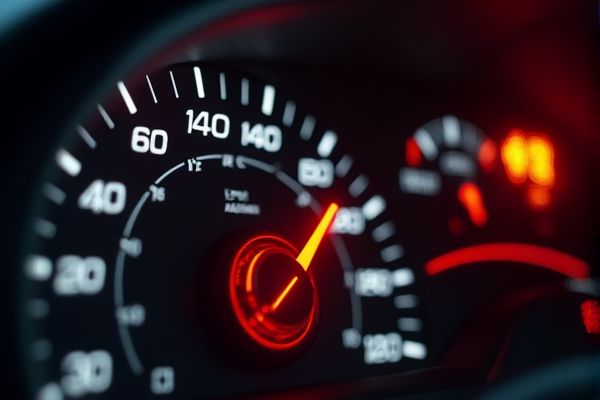
The check engine light on a Subaru Legacy Outback is a crucial diagnostic signal--commonly caused by issues such as malfunctioning oxygen sensors, emission control system errors, or subtle engine misfire events--that demands immediate attention based on onboard diagnostic data. Prioritizing safety, performance, and longevity, expert mechanics use advanced scanning tools to retrieve specific error codes, allowing for targeted repairs that prevent further engine damage and maintain optimal vehicle efficiency.
Subaru Legacy Outback check engine light on meaning
Loose Gas Cap
A loose, broken, or missing gas cap can trigger the check engine light due to reduced fuel pressure and emissions issues.
Failing Catalytic Converter
A clogged or failing catalytic converter can cause the check engine light to appear, affecting emissions and performance.
Fouled Spark Plugs or Spark Plug Wires
Dirty or worn-out spark plugs and spark plug wires can lead to engine misfires and trigger the check engine light.
Dirty Mass Airflow Sensor
A dirty mass airflow sensor can cause incorrect air-fuel mixture readings, leading to the check engine light.
Faulty Emissions Control Parts
Issues with emissions control components can trigger the check engine light due to inefficiencies in the emissions system.
Faulty Head Gasket
A leaking or damaged head gasket can cause engine performance issues and trigger the check engine light.
Fuel Injection System Malfunction
Problems with the fuel injection system can lead to poor engine performance and illuminate the check engine light.
Damaged Oxygen Sensor
A faulty oxygen sensor can disrupt air-fuel mixture calculations, causing the check engine light to appear.
Ignition System Faults
Issues with ignition coils, spark plugs, or spark plug wires can cause engine misfires and trigger the check engine light.
Computer Output Circuit Issues
Problems with the vehicle's computer circuits can lead to incorrect readings and trigger the check engine light.
Old Battery
An old or weak battery can sometimes cause issues that trigger the check engine light, though this is less common.
Emissions Controls Issues
Problems with emissions control systems can cause the check engine light to appear due to inefficiencies or malfunctions.
Fuel and Air Metering System Problems
Issues with fuel and air metering can lead to poor engine performance and trigger the check engine light.
Transmission Issues
In some cases, transmission problems can trigger the check engine light, especially if they affect engine performance.
System Fault with EVAP
Issues with the evaporative emission control system can cause the check engine light to appear due to leaks or component failures.
Coolant Temperature Sensor Fault
A faulty coolant temperature sensor can cause incorrect engine temperature readings, potentially triggering the check engine light.
For car users
If your Subaru Legacy Outback's check engine light comes on, first ensure your gas cap is tightly secured and free of damage, then have a diagnostics scan performed at an auto parts store or by a trusted mechanic to identify any underlying issues. While driving carefully to a service center, monitor your vehicle for abnormal sounds or performance drops, and avoid long trips until the problem is properly diagnosed and repaired.
Ignoring the check engine light
Ignoring the check engine light on your Subaru Legacy Outback may lead to progressive engine damage such as malfunctioning oxygen sensors, catalytic converter failure, and misfires, which can reduce fuel efficiency by up to 20% and significantly increase repair costs. Persisting in this neglect can result in cascading issues within the emissions system and overall engine performance, eventually compromising vehicle reliability and safety.
How to reset?
To reset your Subaru Legacy Outback's check engine light, first use an OBD-II scanner to read and clear diagnostic trouble codes--or alternatively, disconnect the battery for 15-30 minutes--after ensuring any underlying issues (like sensor malfunctions or engine misfires) have been addressed. Prioritize consulting your service manual and accurate data readings to confirm repairs and ensure that the reset process fixes the root cause, preventing future recurrences.
When the check engine light is on in a Subaru Legacy Outback, diagnostic and repair costs typically range from about $100 for minor sensor issues up to $1,000 or more for complex engine or emissions system repairs. Scheduling an OBD-II scan with a trusted mechanic is critical to pinpoint the exact fault--whether it's a simple oxygen sensor replacement or a more extensive catalytic converter repair--to ensure you receive an accurate, data-driven cost estimate.
Future prevention
Ensure timely maintenance--such as routine oil changes, air filter replacements, and thorough inspections of fuel systems, sensors, and emissions components--to avoid issues that may trigger the check engine light in a Subaru Legacy Outback. Prioritize addressing common causes like a loose fuel cap or faulty oxygen sensors immediately by using diagnostic codes for precise repairs, as data shows that early intervention significantly reduces costly engine system failures.
